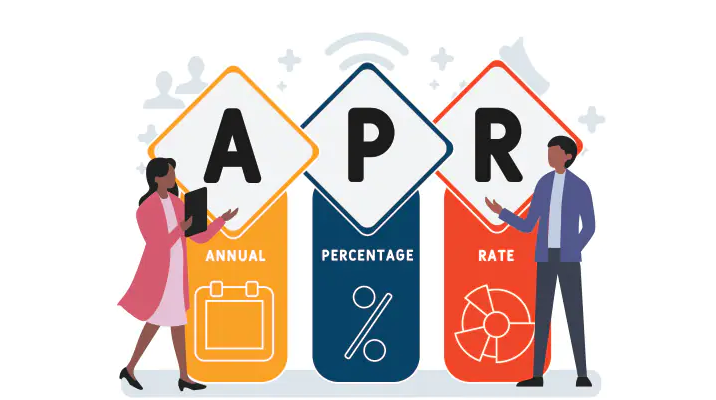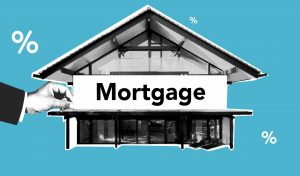The annual percentage rate (APR) represents the annual interest on loan amount and income generated through investment. Both the investors and borrowers are liable to pay APR usually expressed in percentages. APR includes the fees as well as additional taxes on the transaction.
When borrowing money, you need to be aware of the two most important terms as
- An auto loan’s interest rate
- APR (Annual Percentage Rate)
Both these terms are different, and you must know the difference before you get loan approval from the reliable US Mortgage companies.
The auto loan’s interest rate expressed in percentage is the cost you pay each year to get the loan. It doesn’t include the service fees for sanctioning the loan.
Whereas, the Annual Percentage Rate (APR) is the cost and fees you need to pay each year to borrow the money. APR also reflects your interest rate. The additional fees or expenses include
- Discount points
- Brokerage fees
- PMI (Private mortgage insurance).
A high APR indicates you’ll have to pay a loan for more number of years.
Key Information you need to know about APR:
- According to the federal Truth in Lending Act (TILA); All lenders and financial institutions are obliged to disclose the APR, so borrowers can compare auto loans and investment products.
- The APR includes annual interest rate information that prevents consumers from false advertisements.
- An APR doesn’t reflect the actual cost of borrowing as lenders also include the leeway while calculating it.
- APR and APY (Annual percentage yield) are both different terms. APY takes compounding of interest in your account whereas APR doesn’t.
Different Types of APR
Basically, there are two types of APR:
- Fixed APR: As the name suggests, the interest rate on the principal amount remains fixed throughout the loan terms. The APR once calculated also remains fixed as the interest rate once decided by the lender doesn’t vary.
- Variable APR: In this type of APR, the interest rate on the principal keeps on varying throughout your loan terms. The interest rate may increase or decrease depending on the U.S. prime lending rate market. So borrowers may have to pay more if they upsurge in the market.
A high APR indicates you have to pay more Rate interest. APR doesn’t affect the credit card holders who pay the full amount and on time. As APR is calculated on the remaining balance. This is because APR is calculated based on the remaining balance. If you are maintaining a good record by paying full and on time, APR won’t affect you.
How to encounter APR?
Most of the time, you have to deal with APR when you are paying off using credit cards. Single APR is applicable on credit products such as car loans and House mortgages. But there are several other loan types and terms that include multiple APRs.
Have you ever noticed the different types of APRs listed with credit card offers you receive in your mail? It can be:
- Purchase APR
- Balance transfer APR,
- Penalty APR, and
- Cash advance APR.
Generally, one APR triggers another one. It’s quite challenging and confusing. So the most effective way to encounter APRs is to thoroughly check the type of debt and APRs that you need to pay in the future.
If you have any doubt about APRs and other loan terms; ask the lender immediately!
Also Read: Federal Housing Administration (FHA) Loan Requirements for 2022!
How to Calculate APR?

APR helps in determining the real cost of a loan annually. The offered rate of interest may appear lower to some, but the truth is the real annual cost makes it higher. To calculate the APR, take the principal amount, the number of years your loan will last, and interest plus the additional charges that you paid in loan approval.
| APR = ((Interest + Fees / Loan amount) / Number of days in loan term)) x 365 x 100 |
Follow the steps below to calculate APR:
- The first step is to simply calculate the interest rate
- Now add the fees to the interest amount
- Divide by the principal amount.
- Again divide by the total number of days in your loan term
- Multiply the sum by 365 (if one year)
- Now Multiply again by 100 to convert it to a percentage.
Well, That’s it!
APR vs. APY
They may seem and sound similar but are whole different terms. To avoid confusion, check the difference:
APY is the Annual percentage yield and is associated with your saving account. It represents the interest you earn in money. The interest rate for APY is compounded in your account.
APR is the Annual percentage rate is the interest you owe to get the loan. It is calculated on yearly basis and includes the loan fees as well. The interest rate is not compounded in APR
Good Credit Card APRs:
It’s important to know the good APR as it gives you a fair and clear estimate that how much you need to pay to borrow the loan. Check the ratings below.
| Good Credit Card APRs | Credit Rating | Credit Score |
| 19% | Good | 700–749 |
| 21% | Fair/Limited | 640–699 |
| 18% | Bad | 300-639 |
Here is the list of some best credit cards with good APRs in 2022:
- Citi Simplicity Card; $0 annual fee and 16-26% APR (V)
- U.S. Bank Visa® Platinum Card; $0 annual fee and 15.99-26.99% APR (V)
- Wells Fargo Reflect℠ Card: $0 annual fee and 14.49% – 26.49% APR (V)
- BankAmericard® credit card; $0 annual fee and 14.49% – 24.49% APR (V)
How to get a good credit card APR?
- Improve your Credit Score: Maintain your transaction record: Pay your monthly debts, bills, etc. on time. The better your credit score, the better will be your APR.
Want to Calculate your Credit Score now?
- Choose the APR package wisely: Determine what will be your monthly installments in advance. A low introductory APR will last only for 1-2 months. So it’s essential to choose the APR package that compliments your budget.
- Shop Around: Don’t rush in accepting the offer from the first lender. The smart move is to consult 3-4 lenders and compare the interest rates, annual APR, introductory APR rate, and rewards if any.
- Apply the Island Approach: Island approach means using separate cards for paying bills, debts, and monthly expenses to maintain a healthy transaction record. So, you’ll be able to pay off in full and on time. It will also help increase your credit score.
Drawbacks of APR
Although APR helps you find the actual cost of the loan amount. But still, there are many disadvantages of using only APR to compare loans. Check below:
APR works best for annual loan terms. For example, you can’t opt to refinance the loan in the mid of the loan plan. You’ll have to get a new APR that will change the terms & conditions. Thus making pre-APR calculations a waste.
The loans for APR can vary depending on one lender to another. So always check the rates offered, and ancillary costs. Make sure the interest rate is not variable. As you won’t be able to calculate the accurate APR.
Unlike APY, APR doesn’t take compounding of interest in your account. So. you can’t rely on APR if your loan terms have compound interest.
FAQS about APR
What is a good rate of interest on APR?
Generally, for credit cards, A good interest rate is 14% and below with a credit score range of 700-749 which is way better than the average credit card APR.
What is the difference between the annual interest rate and APR?
Interest rate includes only the percentage of interest that you pay as per your loan terms.
Whereas APR includes the annual interest rate and additional expenses that you pay to borrow money from the lender. Additional fees may include discount points, brokerage fees, and PMI (private mortgage insurance).
Is APR annual or monthly?
APR is the annual percentage of interest which further is applied monthly. The monthly API is 1/12th of the annual API.
What is a good APR (Annual percentage rate)?
A good APR for credit card holders is 20 and below. Bank of America® is one of the best platforms that offer the best credit cards with a $0 annual fee, 0% introductory APR, and 14.49% – 24.49% APR variable.
Final Verdict On Annual Percentage Rate (APR)
In a nutshell, APR, or annual percentage rate, is the annual interest rate and loan fees. It indicates how much you need to pay every year to get approved for the loan.
The loan fees may include an origination fee, An APR for a loan can include fees you may be charged, like origination fees. Brokerage fee or PMI.
Did you like this article? Leave comments!
Related Posts: Buydown Mortgage: Learn how to reduce your prevailing Interest Rates?





